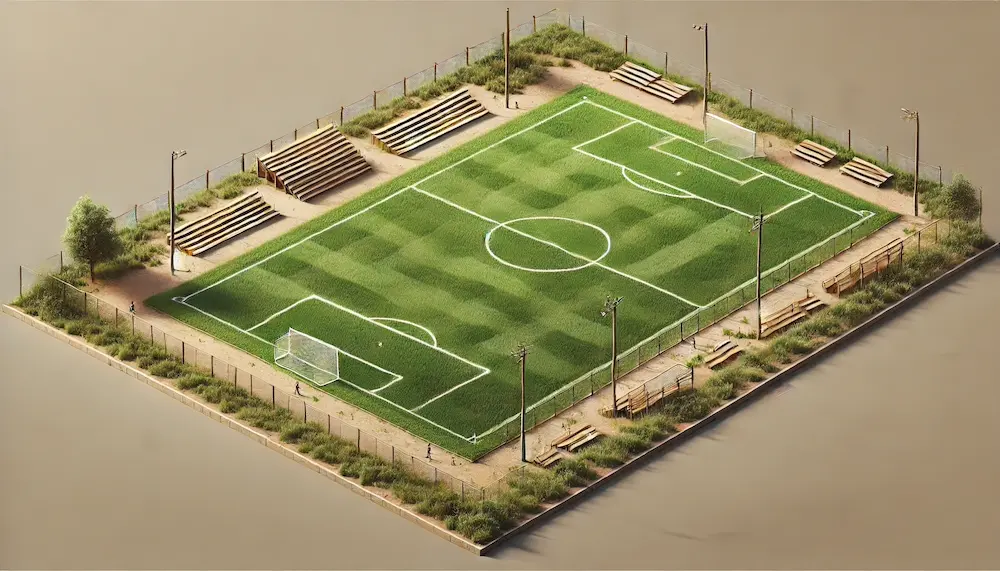Amateur soccer fields serve as accessible venues for local clubs, schools, and community groups, facilitating the enjoyment and development of soccer at the grassroots level. This article explores their dimensions, construction standards, key features, applications, and maintenance considerations.
Introduction to Amateur Soccer Fields
Amateur soccer fields are designed to accommodate recreational and competitive play outside the professional arena. While they may not adhere strictly to professional regulations, these fields provide essential facilities for players of varying ages and skill levels.
Dimensions and Construction Standards
The dimensions of amateur soccer fields can vary based on available space and the age group of players:
- Youth Soccer Fields: For younger age groups, field sizes are scaled down to suit their physical capabilities. For instance, U5–U8 teams often play on fields measuring approximately 25–35 yards in length and 15–25 yards in width.
- Adult Amateur Fields: These fields typically range from 100 to 130 yards in length and 50 to 100 yards in width, aligning with general guidelines but allowing flexibility based on local requirements.
Construction standards for amateur fields may be less stringent than professional ones but should focus on providing a safe and playable surface. This includes proper grading for drainage, appropriate goalpost installation, and clear field markings.
Key Features of Amateur Soccer Fields
- Surface Material: Amateur fields may utilize natural grass, artificial turf, or even well-maintained dirt surfaces, depending on resources and maintenance capabilities. Natural grass offers a traditional playing experience, while artificial turf provides durability and lower maintenance.
- Goalposts and Markings: Standard goal sizes and field markings should be present to ensure a uniform playing experience. Portable goals may be used if they are securely anchored to the ground.
- Accessibility: Fields should be easily accessible to the community, with considerations for parking, seating, and amenities to enhance the spectator experience.
Applications of Amateur Soccer Fields
- Community Recreation: These fields provide venues for local leagues, pickup games, and recreational activities, fostering community engagement and physical fitness.
- Youth Development: Amateur fields are essential for youth soccer programs, offering a space for skill development, teamwork, and sportsmanship.
- School Sports: Educational institutions utilize these fields for physical education classes and interscholastic competitions, promoting student participation in sports.
Considerations for Maintenance
- Regular Upkeep: Maintaining the playing surface through mowing, watering, and repairs ensures safety and playability. Artificial turf requires brushing and infill replenishment to maintain optimal conditions.
- Safety Inspections: Routine checks for hazards, such as debris, uneven surfaces, or damaged equipment, are crucial to prevent injuries.
- Resource Management: Balancing maintenance needs with available resources, including budget and volunteer support, is vital for the sustainability of amateur fields.
Conclusion
Amateur soccer fields play a pivotal role in promoting the sport at the grassroots level, providing accessible venues for players of all ages. By adhering to appropriate dimensions and maintenance practices, these fields contribute significantly to community engagement and the development of soccer talent.
